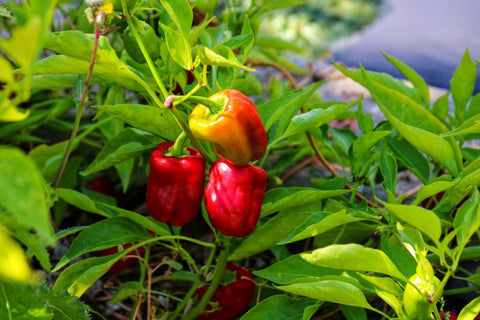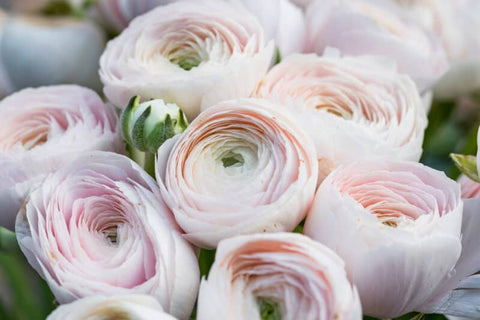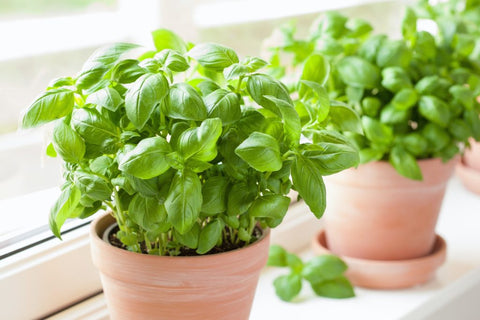A well-designed border garden blends seamlessly into the surrounding hardscape. Often composed of a mix of perennials and annuals, these spaces are meant to add color and beauty to your landscape, while creating continuity and a sense of completeness. Use the tips in this guide to planting a border garden to select and arrange the best mix of plants to help you achieve these goals.The following content also has some reference value for raised garden beds.

What Is a Border Garden?
Border gardens are by definition, gardens that function as a defining border around buildings, walkways, and other areas in the landscape. In the past decade or so, border gardens have taken on the purposeful task of habitat for wildlife, including birds and especially pollinators. Where in the past, gardens had the additional benefit of creating space for wildlife, today, many designers are choosing to fill border gardens with species of plants that not only look good, but more importantly,create habitat that will support wildlife.
Tips for Planting a Border Garden
1. Choose a Color Scheme
There are endless ways to go about choosing colors for your border garden. Maybe you're a diehard sports fans and want to fill your yard with flowers in your team colors. Or you might love the elegant look of a garden composed of pure white flowers and nothing more. However, there are a few points to consider when planning for color.
Firstly, take note of surrounding structures. Is your house light or dark, neutral in color or something flashy? Make sure that the colors of your garden contrast well with their surroundings so that they don't blend together. And if your house is a color traditionally considered neutral, make sure the garden doesn’t clash with the house.
A second point to consider is consistency. If you decide to go with lots of color, go with color everywhere. If you want to go with all white, go with all white everywhere–at least for what is in view of your border garden. In other words, if you’re going with a candy-colored theme, go with candy colors everywhere. A border garden that does not match the existing landscape will look out of place and become a costly issue to fix later on.

2. Overlap Bloom Times
Most border gardens are primarily about providing color, usually from flowers. However, most perennial plants don't bloom non-stop throughout the growing season. In reality, many of these plants have set periods in which they bloom, set seed, and return to vegetative growth. That's why it’s important to consider bloom times and durations when choosing plants for your landscape.
To pick the best border garden plants, pay close attention to when your selected plants bloom in your region. On a sheet of paper, draw a line and label it with the months of your growing season, then add a line above or below the baseline with the bloom times of each selection. Note any gaps that might occur and search for additional species to fill in the gaps so that there are plants in all phases of blooming throughout the season. This will be beneficial to the overall look of the garden, as well as pollinators.
3. Mix Textures
After considering colors and bloom times, it’s important to keep in mind the various textures you can bring into your garden space. Border gardens offer an opportunity to bring attention to surrounding structures and ideally, the border should provide texture and fullness.
While selecting plants, keep various leaf sizes, shapes, and arrangements in mind and try for a mixture that will provide the right amount of texture. The vertical lines of ornamental grasses, for example, go nicely with other linear structures and pathways, while the thick, rounded leaves of many shade plants provide contrast. Collectively, the varying textures can be used to compliment and accentuate the surroundings.
4. Arrange Plants by Height
Border gardens can be used to create a screen and provide privacy, or they can be used to define a low perimeter. In either case and everything in between, it’s important to consider the height of plants in your border garden. As a general rule of thumb, taller plants should be situated toward the back of the garden while shorter plants should be at the front of the garden. Be careful not to block shorter plants with taller plants or hide groundcovers with larger, overhanging plants.

5. Consider Plant Types
Many border gardens are designed with both perennial and annual plants. Taking into account bloom times, heights, and textures, just about any mixture of annuals and perennials will do the job. However, note that there are pros and cons for each of these plant types.
For starters, annuals typically need to be replanted (or reseeded) on a yearly basis, requiring more time, energy, and money to get the job done. However, annuals allow for a new set of plants, new colors, and more variety. Perennials, on the other hand, often benefit from a little bit of care, whether it be trimming, mulching, or dividing larger plants. Perennials also offer less design flexibility and usually cost more on the front end. On the other hand, perennial plants provide habitat throughout the year, provide excellent structure in the garden, and don't need to be purchased each spring.
Keep in mind that border gardens are more than just a place filled with plants. They set a mood and compliment their surroundings. Well-designed border gardens provide valuable habitat and enrich your landscape year-round.









